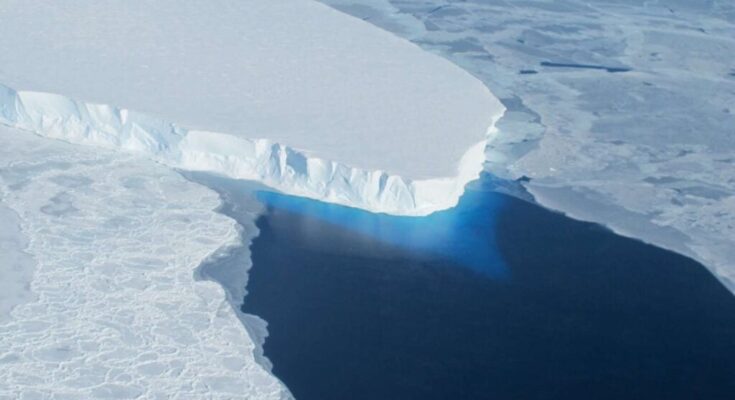
Researchers have discovered that the Thwaites Glacier in Antarctica, often also referred to as the “Doomsday Glacier,” is melting faster than ever. Utilizing ice-breaking ships and a torpedo-shaped underwater robot named Icefin, scientists from the International Thwaites Glacier Collaboration (ITGC) have observed that the glacier could continue to melt irreversibly. This would lead to a significant rise in global sea levels.
Current research and findings
Since 2018, a team of international scientists has closely examined Thwaites to understand how and when it might fully melt. After six years of dedicated research, the latest report released on September 19, 2024 underlines the severity of the situation.
Rob Larter, a marine geophysicist with the British Antarctic Survey remarked, “Our findings indicate it is set to retreat further and faster.” These findings are supported by various experiments, including satellite and GPS data, and seawater has been shown to be moving around more than six miles beneath Thwaites, enhancing the glacier’s rapid melting.
Historical insights and ice melting mechanisms
Further investigation into the glacier’s past revealed that Thwaites began retreating rapidly in the 1940s. This was likely triggered by a strong El Niño event. The retreat was identified through the analysis of marine sediment cores. This study was conducted by Julia Wellner, a professor at the University of Houston, and her team.
The ice melt’s dynamics were also captured by Icefin’s images. They showed warm ocean water funneling through deep cracks and “staircase” formations in the ice.
Potential impacts and future projections
The collapse of the Thwaites glacier poses a grave threat. The “Doomsday Glacier” holds enough water to raise global sea levels by over two feet. However, its complete disintegration could lead to an approximately ten-foot rise in sea levels.
This can lead to severe flooding of coastal areas across the globe, including cities such as Miami and London, as well as regions like Bangladesh and the Pacific Islands.
Despite concerns, computer models have recently suggested that the feared rapid collapse of Thwaites’ ice cliffs is less likely than previously thought.
Ongoing research needs and concerns
The scientific community agrees that much more research is needed to understand the complexities of Thwaites Glacier and to ascertain whether its decline is indeed unstoppable.
Eric Rignot, a glaciologist from the University of California, Irvine, and a member of the ITGC team expressed ongoing concerns: “While progress has been made, we still have deep uncertainty about the future.”
The continued investigation into Thwaites Glacier is crucial for understanding its immediate threats. More research will help formulate global strategies to mitigate the impacts of potential sea-level rise. This underscores the urgent need for sustained and focused research efforts to protect vulnerable coastal communities.



